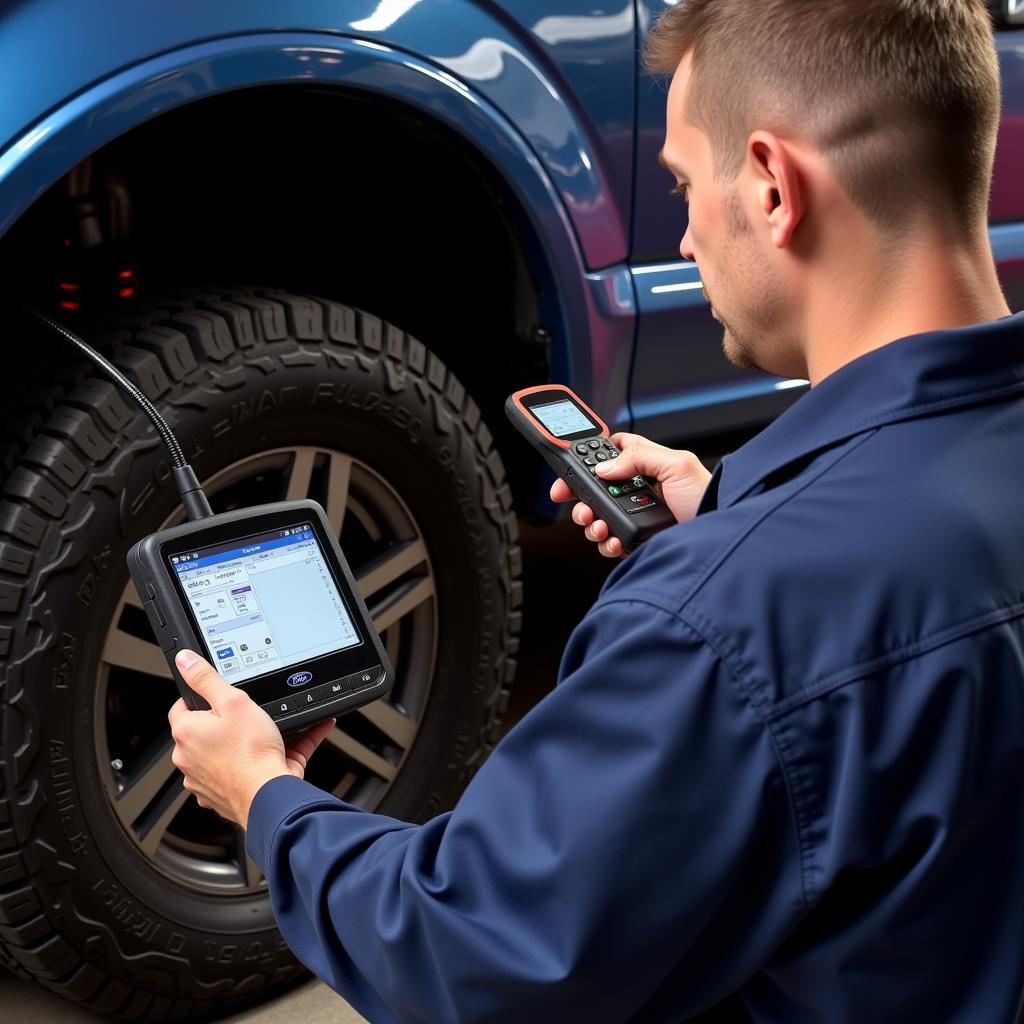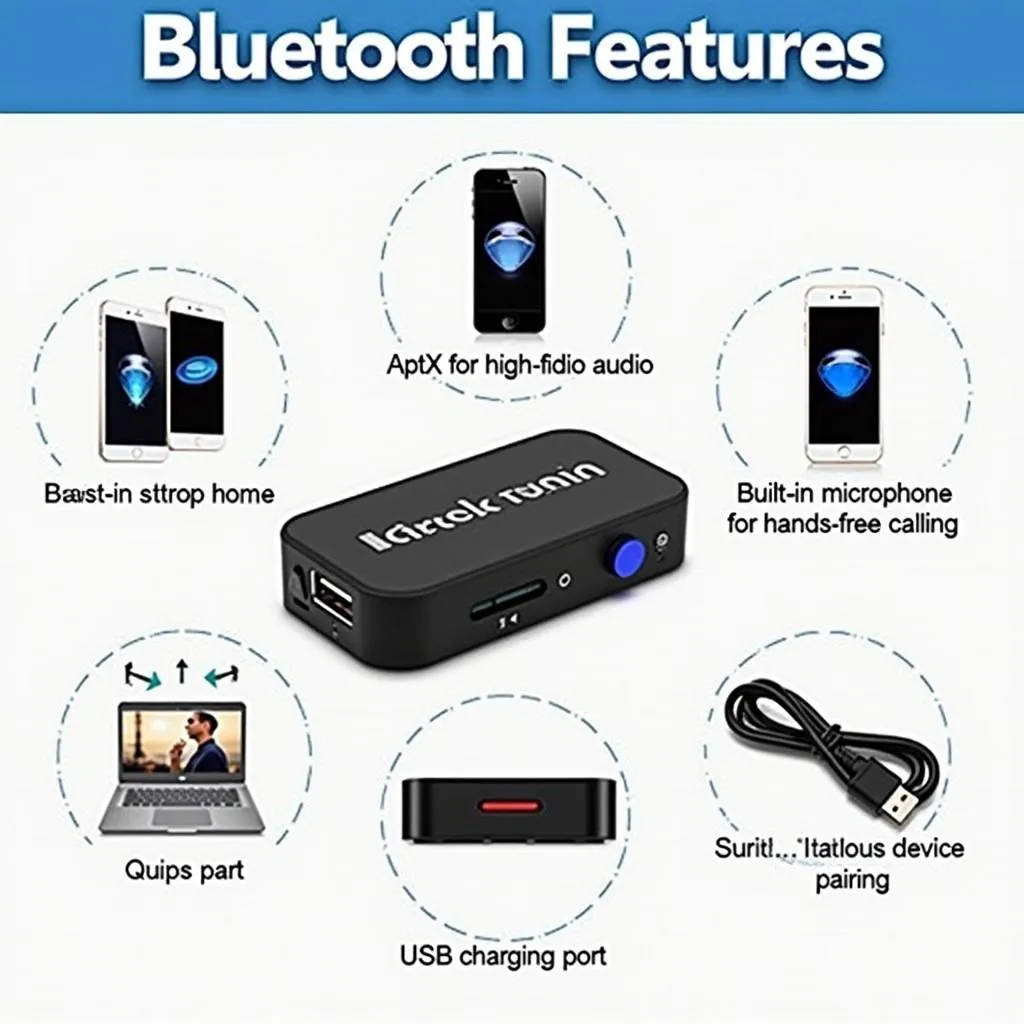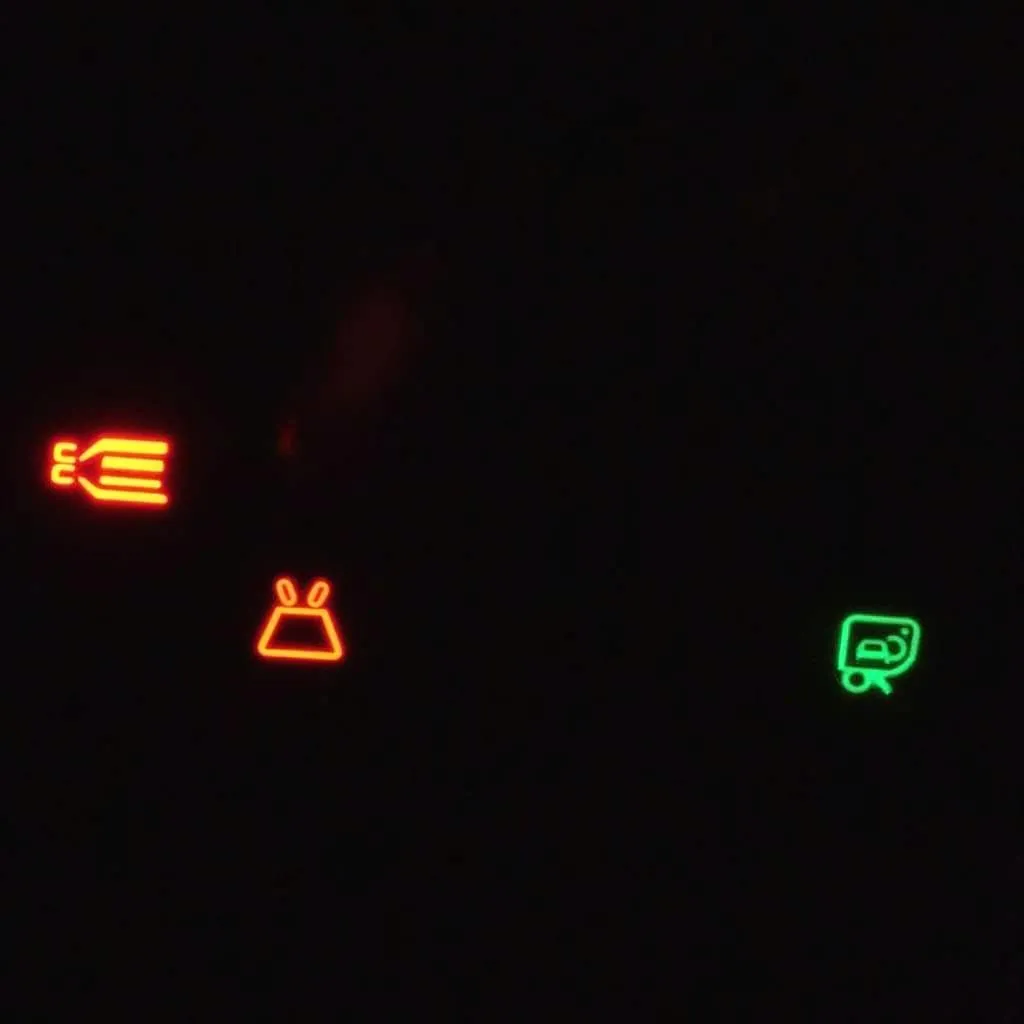Experiencing the dreaded ABS and brake warning lights illuminating your dashboard in your 2000 F150? You’re not alone. This is a common issue reported by many F150 owners, and it can be caused by a variety of factors. Don’t panic, though. While these lights signal a potential problem with your truck’s critical braking system, understanding the common culprits can help you troubleshoot the issue or effectively communicate the problem to a qualified mechanic.
Common Causes of ABS and Brake Warning Lights
Several components work together to ensure your F150 stops safely and efficiently. When the ABS and brake warning lights turn on simultaneously, it often points to one of these common culprits:
- Low Brake Fluid: This is one of the most frequent reasons for both lights to activate. Brake fluid is the lifeblood of your braking system, and a leak or low fluid level can significantly compromise braking performance.
- Faulty ABS Wheel Speed Sensor: Your F150 utilizes wheel speed sensors to monitor the rotational speed of each wheel. If a sensor malfunctions or gets coated in debris, it can disrupt the ABS system and trigger the warning lights.
- Worn Brake Pads: Worn brake pads not only reduce braking effectiveness but can also trigger the warning lights, especially if they are worn down to the point where the brake pad wear indicator makes contact.
- ABS Module Problems: The ABS module is the brain of your anti-lock braking system. Over time, the module itself can experience electrical issues or failures, leading to the illumination of the warning lights.
- Blown Fuse: A blown fuse in the ABS system can disrupt its operation and cause both the ABS and brake warning lights to illuminate.
Troubleshooting Tips
While it’s always best to consult a qualified mechanic for brake-related issues, here are a few preliminary checks you can perform:
- Check Your Brake Fluid: Locate the brake fluid reservoir under the hood. The reservoir will have a “minimum” and “maximum” marking. If the fluid level is below the “minimum” line, add the appropriate brake fluid (check your owner’s manual for the correct type).
- Inspect Your Brake Pads: Visually examine your brake pads through the spaces between the wheel’s spokes. If the pads appear significantly thin or you notice metal-on-metal contact, it’s time for a replacement.
- Check for Visible Leaks: Carefully inspect the area around your brake lines, calipers, and wheel cylinders for any signs of leaking brake fluid.
When to Seek Professional Help
If your initial checks don’t reveal a simple fix or the warning lights remain illuminated, it’s crucial to seek professional assistance. Attempting to diagnose or repair complex brake system components without the necessary expertise and equipment can be dangerous.
“Ignoring ABS and brake warning lights is like playing Russian roulette with your safety,” says veteran mechanic and automotive instructor, John Miller. “These lights are there for a reason, and addressing the underlying problem promptly can save you from costly repairs and potentially dangerous driving situations.”
Frequently Asked Questions
Q: Can I still drive my F150 with the ABS and brake warning lights on?
A: While you might technically still be able to drive, it’s highly discouraged. Your braking system may not function optimally, increasing the risk of an accident.
Q: How much does it cost to fix ABS and brake light issues?
A: The cost can vary significantly depending on the root cause, ranging from a simple fuse replacement to a more expensive ABS module repair or replacement.
Q: Can a bad battery cause ABS and brake lights to come on?
A: While less common, a weak battery or electrical system issues can sometimes interfere with the ABS system, triggering the warning lights.
 Professional Mechanic Diagnosing ABS System on a Ford F150 Using a Diagnostic Scanner
Professional Mechanic Diagnosing ABS System on a Ford F150 Using a Diagnostic Scanner
Conclusion
Having your ABS and brake warning lights turn on in your 2000 F150 can be alarming. Remember, these lights are crucial safety indicators and should never be ignored. While some basic checks might reveal a straightforward solution, always prioritize safety and seek professional help from a qualified mechanic for a thorough diagnosis and repair.


